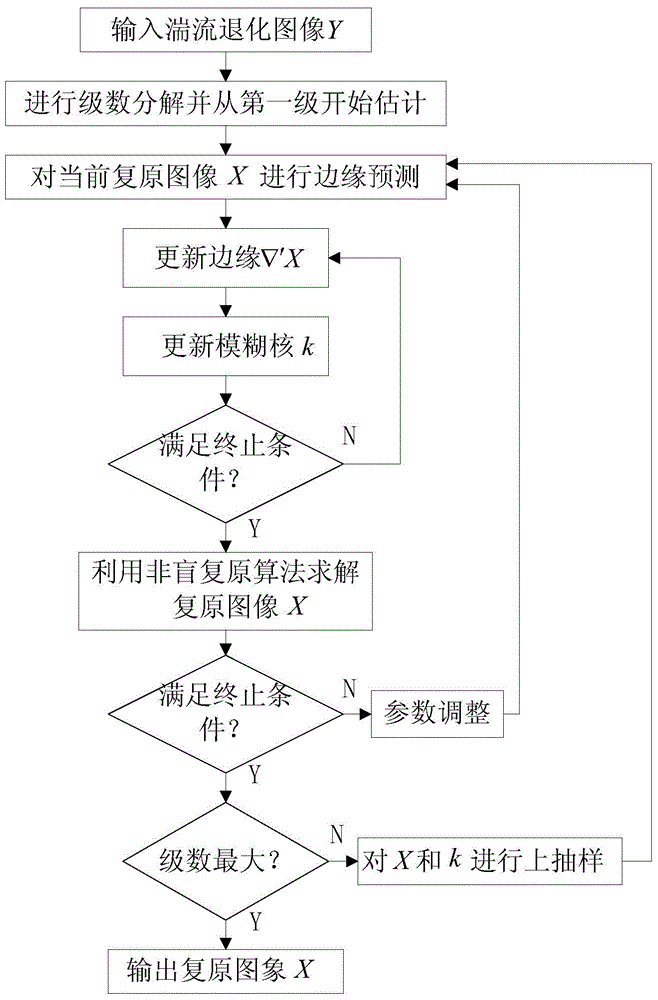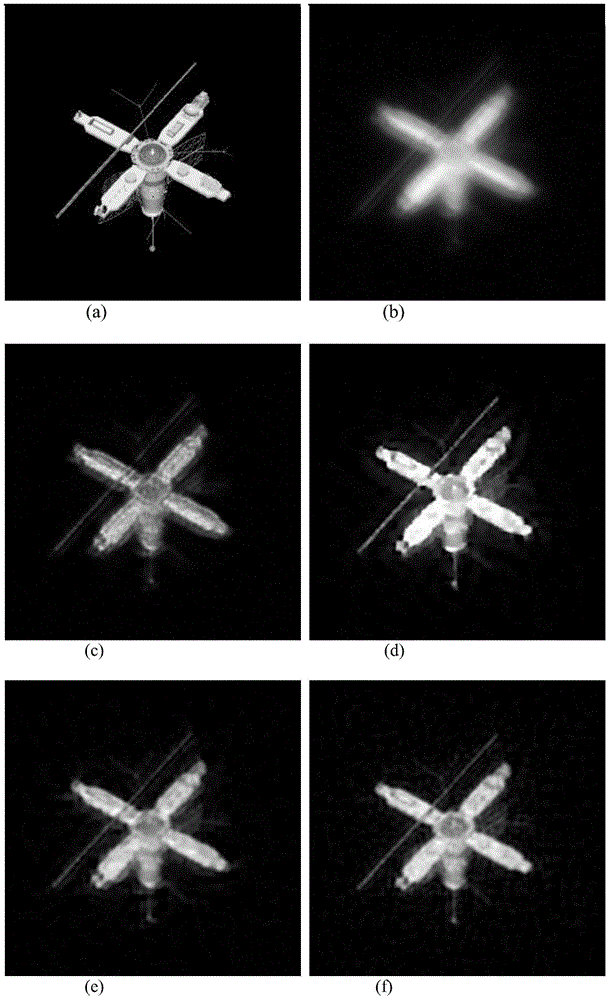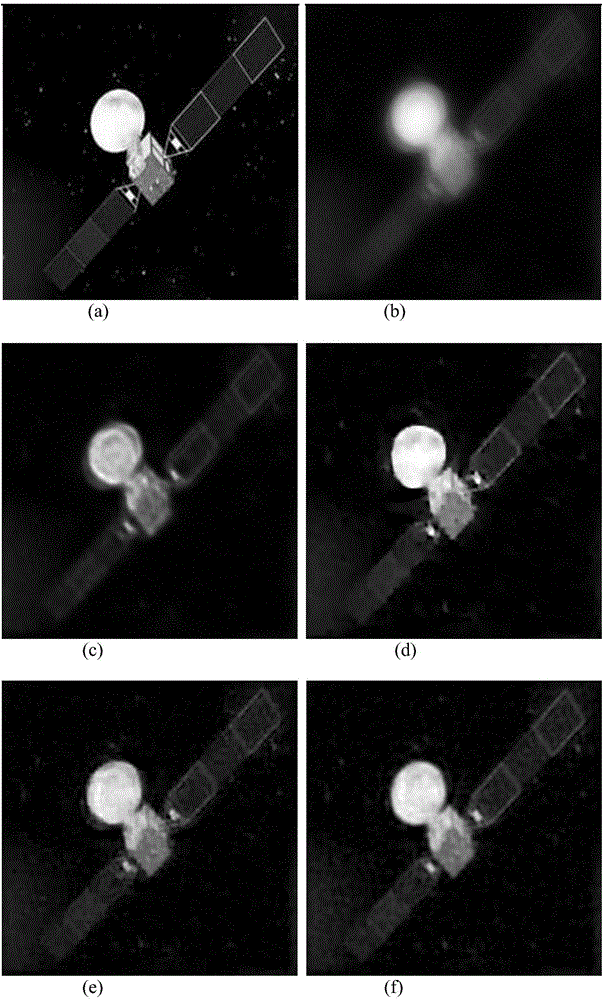Turbulence-degraded image blind restoration method based on edge prediction and sparse ratio regular constraints
A degraded image, blind restoration technology, applied in image enhancement, image analysis, image data processing and other directions, can solve the problems of restoration of image artifacts, many images, misleading point spread function restoration results, etc., to reduce artifacts, better Restoration effect
- Summary
- Abstract
- Description
- Claims
- Application Information
AI Technical Summary
Problems solved by technology
Method used
Image
Examples
specific Embodiment
[0063] The hardware environment used for implementation is: Pentium-43G computer, 2GB memory, 128M graphics card, and the running software environment is: Mat1ab R2012b and windows XP. The new algorithm proposed by the present invention is realized by using Matlab programming language. The image data uses two satellite simulation images of 256×256. Through the phase screen of simulating atmospheric turbulence, the simulation experiment of turbulence degradation and blurring is carried out on the satellite image. In this experiment, the atmospheric coherence length r 0 = 0.05m, telescope aperture diameter D = 1.0m, convolute the obtained point spread function with the original satellite image, and then apply Gaussian random noise (variance is 0.18) to obtain the turbulence degradation image of the experimental simulation, set The support domain of the point spread function is 35×35.
[0064] The present invention is specifically implemented as follows:
[0065] Step 1: Perfor...
PUM
 Login to View More
Login to View More Abstract
Description
Claims
Application Information
 Login to View More
Login to View More - R&D
- Intellectual Property
- Life Sciences
- Materials
- Tech Scout
- Unparalleled Data Quality
- Higher Quality Content
- 60% Fewer Hallucinations
Browse by: Latest US Patents, China's latest patents, Technical Efficacy Thesaurus, Application Domain, Technology Topic, Popular Technical Reports.
© 2025 PatSnap. All rights reserved.Legal|Privacy policy|Modern Slavery Act Transparency Statement|Sitemap|About US| Contact US: help@patsnap.com



